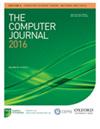基于图卷积网络的网络安全实体识别模型
IF 1.5
4区 计算机科学
Q4 COMPUTER SCIENCE, HARDWARE & ARCHITECTURE
引用次数: 3
摘要
随着互联网技术在日常生活中的高度发展,网络安全逐渐成为普通民众和各国关注的焦点。网络安全知识分析方法在知识图技术的帮助下实现了高度进化,特别是可以提取出大量细粒度的威胁情报信息。但命名实体识别是构建安全知识图的首要任务。传统的NER模型很难确定网络安全领域中结构复杂的实体,也很难捕捉非局部和非序列依赖关系。在本文中,我们提出了一个网络安全实体识别模型CyberEyes,该模型使用图卷积神经网络提取的非局部依赖关系。该模型可以捕获本地上下文和图级别的非本地依赖关系。在评估实验中,在NER的黄金评估标准下,我们的模型在网络安全语料库中的F1得分为90.28%,比经典的CNN-BiLSTM-CRF模型获得的86.49%要好。本文章由计算机程序翻译,如有差异,请以英文原文为准。
CyberEyes: Cybersecurity Entity Recognition Model Based on Graph Convolutional Network
Cybersecurity has gradually become the public focus between common people and countries with the high development of Internet technology in daily life. The cybersecurity knowledge analysis methods have achieved high evolution with the help of knowledge graph technology, especially a lot of threat intelligence information could be extracted with fine granularity. But named entity recognition (NER) is the primary task for constructing security knowledge graph. Traditional NER models are difficult to determine entities that have a complex structure in the field of cybersecurity, and it is difficult to capture non-local and non-sequential dependencies. In this paper, we propose a cybersecurity entity recognition model CyberEyes that uses non-local dependencies extracted by graph convolutional neural networks. The model can capture both local context and graph-level non-local dependencies. In the evaluation experiments, our model reached an F1 score of 90.28% on the cybersecurity corpus under the gold evaluation standard for NER, which performed better than the 86.49% obtained by the classic CNN-BiLSTM-CRF model.
求助全文
通过发布文献求助,成功后即可免费获取论文全文。
去求助
来源期刊

Computer Journal
工程技术-计算机:软件工程
CiteScore
3.60
自引率
7.10%
发文量
164
审稿时长
4.8 months
期刊介绍:
The Computer Journal is one of the longest-established journals serving all branches of the academic computer science community. It is currently published in four sections.
 求助内容:
求助内容: 应助结果提醒方式:
应助结果提醒方式:


